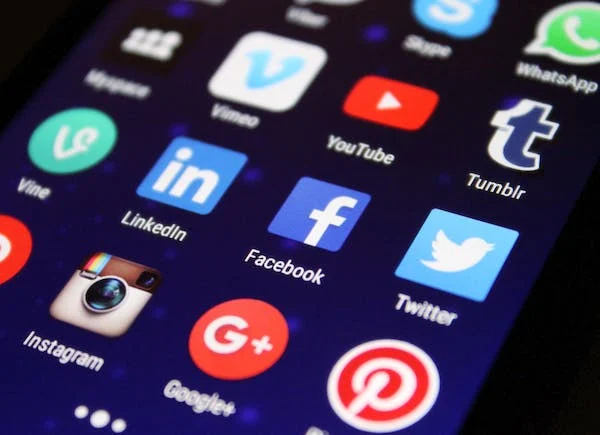Starting a business is one of the most difficult things to do, and keeping it afloat is even harder. In the process of struggling to make a profit, there’s a major game player that most startups overlook. Branding. It seems small and insignificant to most people, after all, what business does a small thrift boutique or a gadget store have with branding? It’s for the big boys and girls in business, the MTNs and Dangotes of this world.
If this is your thought train, you’re very wrong. Whether you know it or not, you have a brand already. The impression people have about your business right from the moment you tell them about it is your brand. Without deliberate efforts to brand your business the right way, you’re most likely doing it wrongly, and guess what? If people don’t think your brand is proficient, they won’t patronize you.
What are those mistakes that you’re making, and how do you correct them? In this article, we’ll look at 10 common branding mistakes small business owners make that hinder business growth. First, let’s understand what branding is.
What is Branding?
Table of Contents
Branding is the identity of your business. It is what your customers should expect from your business, your promise to deliver. It is who your business is and what it stands for. In total, your brand is the complete experience of your business, from the first contact a customer has with you to their goodbye.
Note that branding is not a logo. While your logo is an important part of your business brand, it is not your entire brand.
Now you know what branding is, what mistakes are you making with your brand? We’ll look at some of them below:
Common Branding Mistakes:
1. Misconception:
This is without fail the most common branding mistake. You can’t do something well if you don’t understand what it is. Though we’ve previously talked about what branding is, we should also discuss what it isn’t.
Branding is not your logo. It is not your advertisement or marketing campaign plan. Getting people to know about your business is not branding, rather branding is the impression your business leaves in your audience when you’re gone. Your brand is what you communicate to your audience when advertising.
2. Doing It Alone:
Unless you’re a brand designer (which you probably aren’t), you need professional help. Yes, small businesses tend to have an equally small budget, but when you set aside money to reinvest in your business, consider getting a brand design specialist that can revamp your business brand in ways you can’t imagine. Doing it yourself may seem cost-effective now, but the absence of a solid brand identity will cost you more in the long run.
3. Lack of Guidelines and Structure:
Branding without guidelines is like steering a ship in the middle of the ocean without a compass. You’ll lack directions and if you don’t know where you’re going, you won’t know how to get there.
Clearly state what your brand is about, define things like colours and concepts, and leave no room for guesswork. This will also help new members of your team in the future to prevent inconsistencies in your brand.
4. A Bad Logo or Business Name:
The logo and name of your business are the first things people see when they first get a look at what you’re offering. For this reason, you should always make sure your logo and name are easily recognizable and hard to forget.
Your logo colours should depict your brand identity and should not clash with each other or be difficult to look at. Lengthy names are a big NO in business, if your name is too long, no one’s ever going to remember it.
Lastly, keep in mind that unlike every other thing in branding, it is very difficult to change your name and logo, so be sure to get it right the first time.
5. Basing Your Brand on Trends:
It’s good to be current and hop on the latest TikTok or Instagram trend, especially to get the attention of your audience and advertise your products. However, that trend should not be the foundation of your brand if you want your brand to last, because trends are never around for long.
For example, if you’re in the beauty and fashion industry and you make orange your brand colour because it’s the colour on the runways for that season, your brand will suffer when that orange goes out of style.
Moreover, jumping from trend to trend is a glaring trademark of inconsistency, which is the fastest way to lose customers. Go along with a couple of trends once in a while if those trends can attract your target audience, but make sure you don’t lose sight of what your brand is really about.
6. Poorly Written Content:
You’re going through a restaurant’s website to make a food order and a deliciously garnished plate of spaghetti catches your eye. You rush to read the contents of the spaghetti, but something catches your eye. Spaghetti is spelled as “Supageti” (and it’s not humour). You may still place that order, but to you, that company won’t scream professionalism anymore.
That’s the danger of errors in your written content. Always proofread and if possible, send your write-up to someone else on your team to edit. Your grammar and spelling MUST always be accurate. If you’re a one-man-squad, that’s still not an excuse. Writing assistants like Grammarly can help you out.
7. Poor Customer Service:
Ever heard the saying, “The customer is always right”? Agree or disagree with that statement but it holds a fundamental truth. If you want your brand to have positive reviews from customers, you can’t afford to treat them poorly. Like every other walk of life, business will test your patience. You’ll meet difficult to straight-up impossible people, and customers that seem to be sent from hell to make your day bad. In all of this, learn to keep your cool, because one bad review can ruin your business’ reputation for months.
8. Neglecting Copywriting:
Yes, branding is mostly aesthetic, but there are little details outside visuals that are equally important. Your written content, no matter how short, should leave a good impression on people and should prompt them to give your business a try.
Mission and vision statements, tag line, welcome messages….every line of text you present, should convert and leave a positive impression of your brand behind.
9. Trying To Please Everyone:
A friend once told me, “In life, hate is as important as love”. I wouldn’t be that extreme, because hate is a bad emotion to show, but honestly? You can never make everyone happy. Some people will love your brand, others will hate it. Do you sell delicate, girly gowns? One customer will say “Oh I love how feminine your clothes are”, while another will say “You’re trying to force every woman into a box”.
So long as your brand provides value to your defined audience, you’re good to go. Don’t smother your business trying to please everybody. You won’t succeed anyways.
10. No Feedback:
The only way to know if you’re doing something right is to ask for an outside opinion. You didn’t grade your schoolwork yourself, did you? Even if you hired a brand designer, get feedback from your customers and friends, or social media, particularly when starting out. That way, you’ll know what to improve on and what stays or goes.
In summary, branding is everything in your business. A bad brand automatically means bad advertisement because you either have nothing to show the world, or you’re unknowingly showing something cringe-worthy. Share which of these mistakes you’re making in the comment section below.
Need professional guidance? You’re one step in the right direction. Contact Oparawhite Global to help you take your business to the next level.


